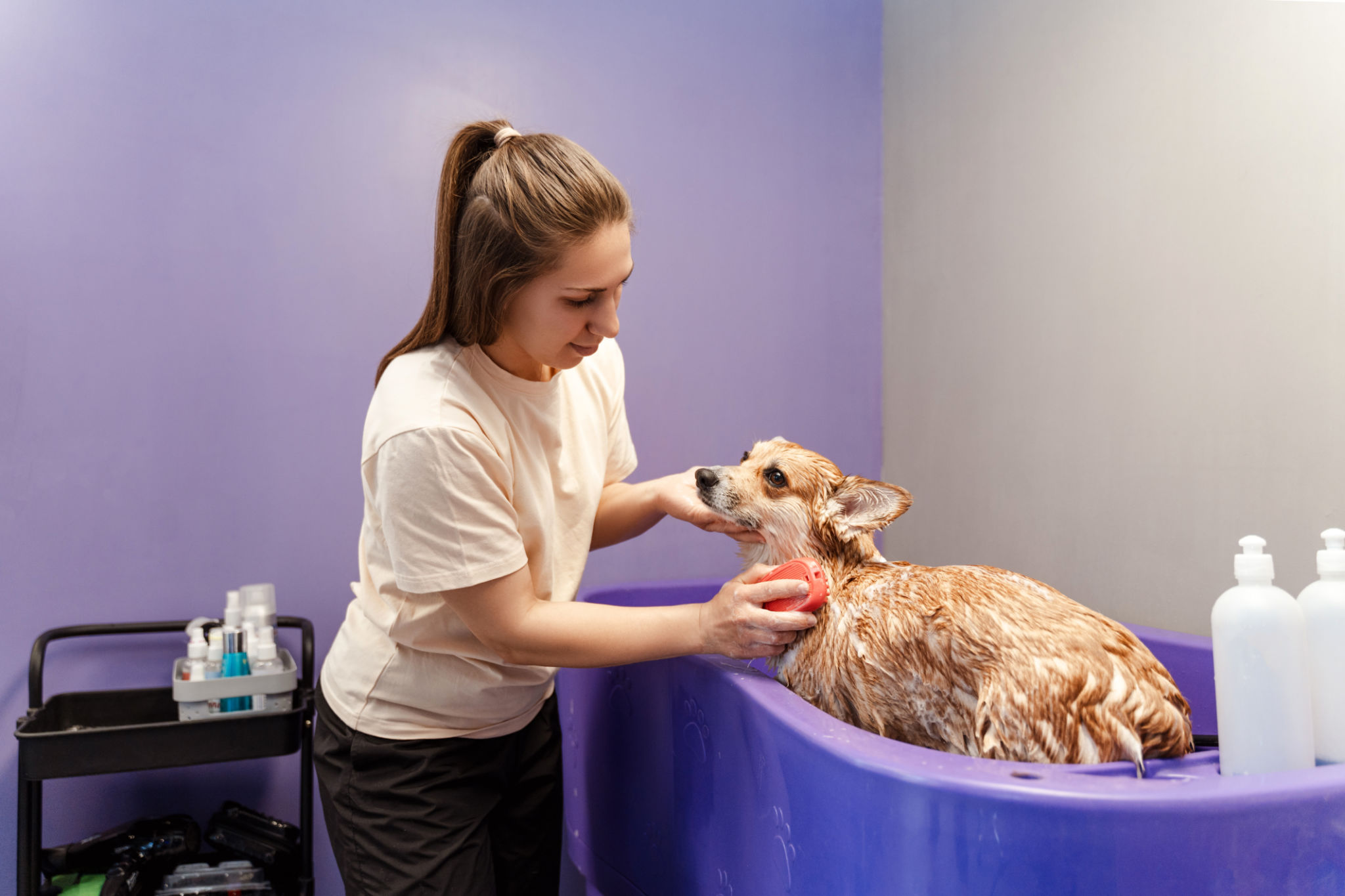Expert Tips for Keeping Your Pet's Coat Healthy Between Grooms
Regular Brushing: The Foundation of a Healthy Coat
Keeping your pet’s coat healthy between grooming sessions begins with regular brushing. This routine not only removes dirt and debris but also helps distribute natural oils throughout the coat, promoting shine and softness. The frequency of brushing will depend on your pet’s coat type. For example, long-haired breeds may require daily brushing, while short-haired pets might benefit from a weekly session.

Choosing the Right Brush for Your Pet
Using the correct brush for your pet’s specific coat type is crucial. For short-haired pets, a bristle or rubber brush works well, while long-haired pets may need a slicker brush or a comb to tackle tangles and mats. Additionally, consider a de-shedding tool if your pet tends to shed excessively.
Bathing Your Pet: Finding the Balance
While regular baths are essential for maintaining a clean and healthy coat, over-bathing can strip natural oils, leading to dry skin. Typically, bathing your pet once a month is adequate, but this can vary based on activity level and breed. Ensure that you use a pet-friendly shampoo specifically formulated for your pet’s skin and coat type.
Proper Bathing Techniques
When bathing your pet, always use lukewarm water and ensure that all the shampoo is thoroughly rinsed out to prevent skin irritation. After the bath, dry your pet with a towel or use a pet-safe dryer on a low setting to avoid overheating.

Nutrition: The Backbone of Coat Health
A balanced diet rich in essential fatty acids, vitamins, and minerals is vital for maintaining your pet’s coat health. Omega-3 and omega-6 fatty acids, in particular, play a significant role in promoting a glossy and healthy coat. Consider consulting with your vet to determine the best diet plan for your pet.
Supplements for Coat Health
If your pet’s diet lacks certain nutrients, supplements can be an excellent addition to enhance coat condition. Look for supplements containing fish oil or flaxseed oil, which are rich in omega fatty acids. However, always consult with your veterinarian before introducing any new supplements into your pet’s routine.

Regular Check-ups and Parasite Control
Routine veterinary check-ups are essential in diagnosing any underlying health issues that may affect coat health. Conditions such as allergies or thyroid problems can manifest through a dull or patchy coat. Furthermore, maintaining a strict parasite control regimen protects against fleas and ticks, which can cause significant skin irritation and hair loss.
Recognizing Signs of Coat Issues
Stay vigilant for signs such as excessive shedding, bald spots, or changes in coat texture. These could indicate underlying health problems that require professional attention. Early intervention can prevent minor issues from developing into more serious conditions.
Conclusion: Consistent Care for Long-Term Health
Keeping your pet’s coat healthy between grooming sessions is an ongoing process that requires attention to brushing, bathing, nutrition, and regular health checks. By following these expert tips, you can ensure that your furry companion remains comfortable and their coat stays vibrant and healthy all year round.
